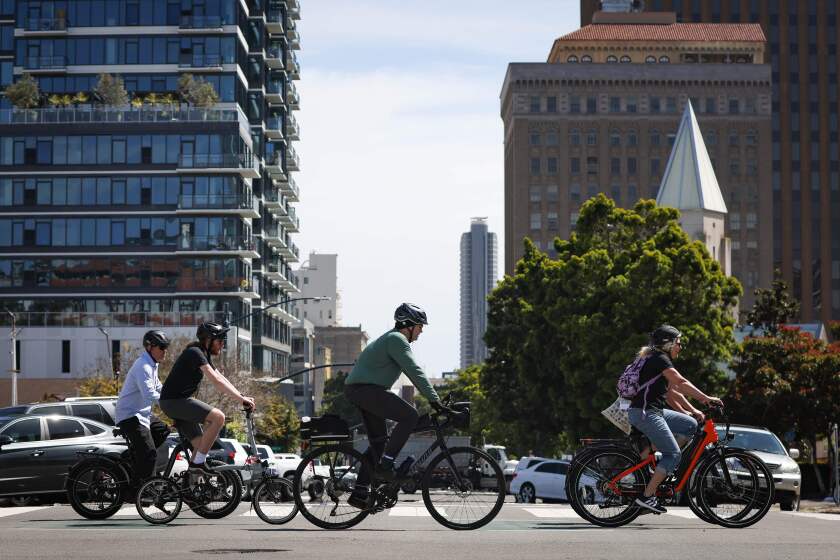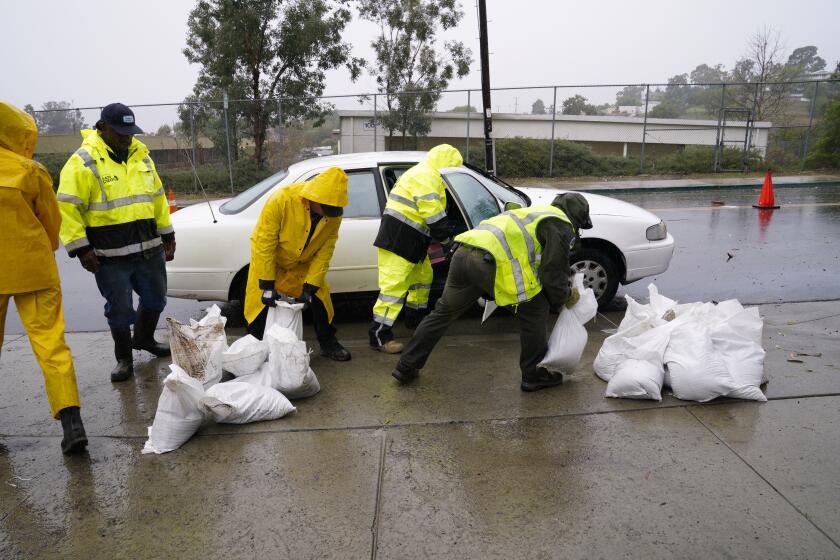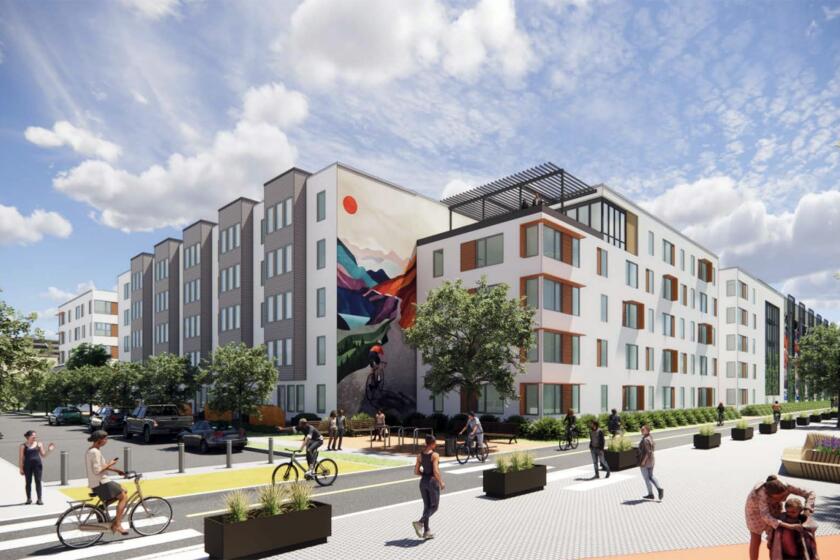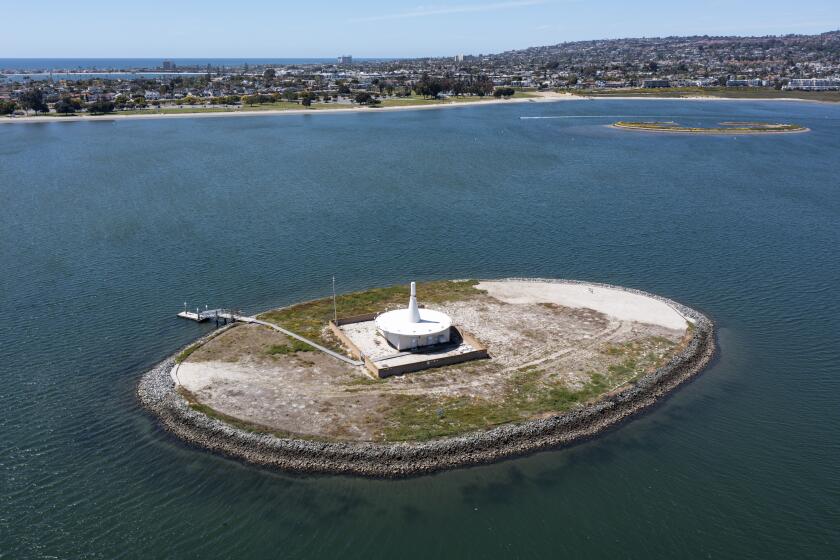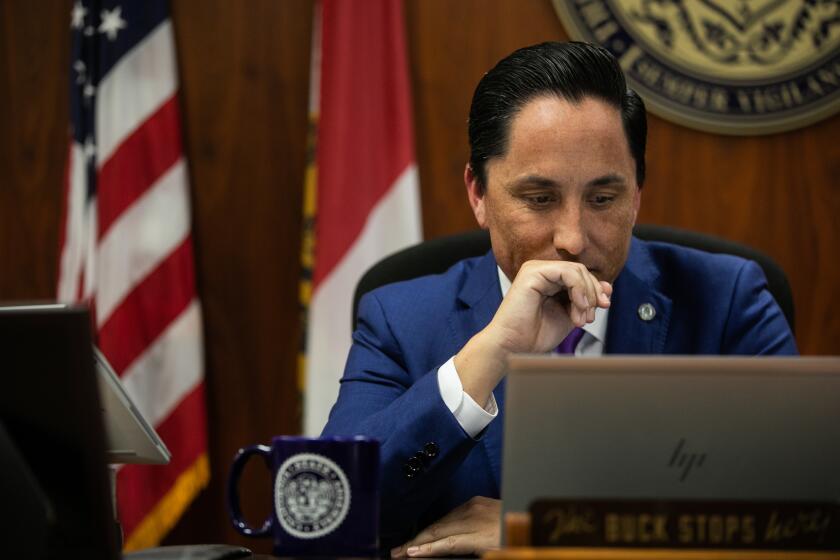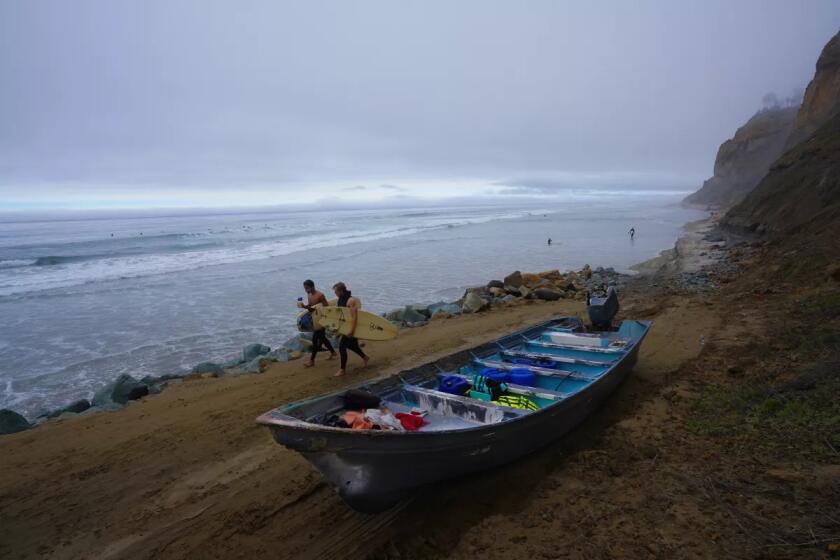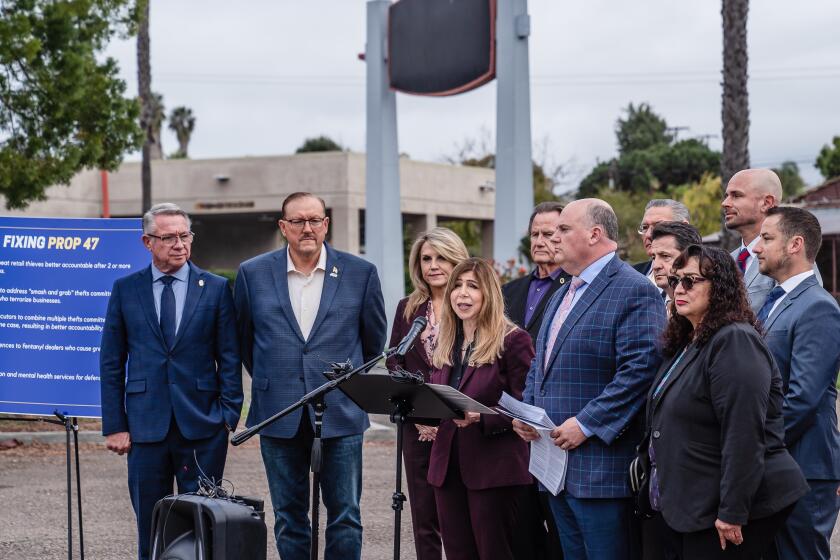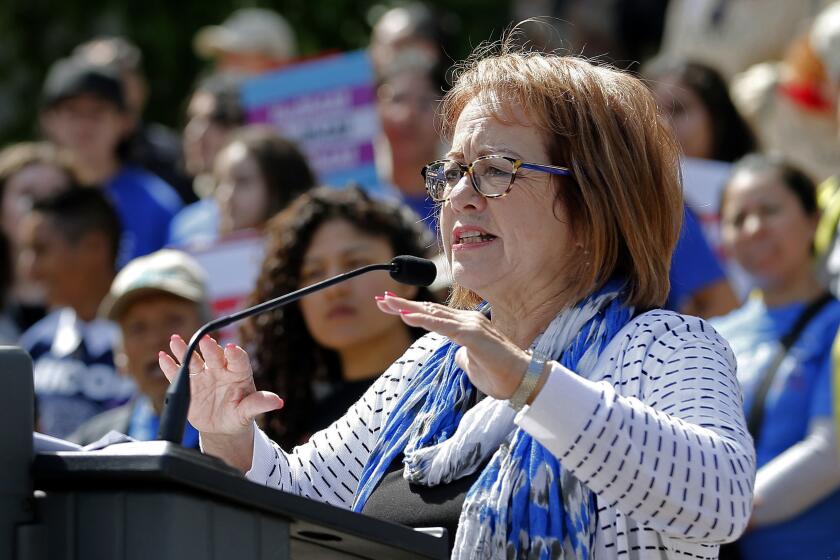Plan would add dense housing near new trolley stations along Morena Boulevard
San Diego officials are proposing major zoning changes near new trolley stations along Morena Boulevard that would allow 10-story housing projects and revamp much of the street grid between Interstate 5 and the University of San Diego.
The goal is helping solve the city’s severe lack of housing with dense projects along a new trolley line connecting Old Town and the University of California San Diego that’s expected to begin operations in 2021.
The proposal, called the Morena Corridor Specific Plan, also includes new protected paths for bicyclists and pedestrians, an artisan district, a linear park along Tecolote Road, wider sidewalks, public plazas and urban greens.
The plan covers a 280-acre area that follows the path of the new trolley line in Clairemont and Linda Vista, then extends east to include the existing Linda Vista/Moreno trolley station on the green line.
The two new trolley stations included in the plan will be located where Morena Boulevard crosses Clairemont Drive and where Morena Boulevard crosses Tecolote.
By creating a significantly revamped growth blueprint for the area over the next 20 to 30 years, the plan aims to transform a mostly blighted, auto-oriented industrial area into a vibrant and dense trolley-oriented village.
Supporters say the plan will serve as a model for transit-oriented development in San Diego, which helps solve the housing shortage without the urban sprawl that worsens pollution, climate change and traffic congestion.
Critics, including many nearby residents, say the dense housing in the plan would damage the character of the area, worsen traffic congestion and block views of Mission Bay from houses in Overlook Heights and Bay Park.
They also contend the plan overestimates how many residents will use the trolley instead of vehicles and fails to require that a significant portion of the new housing be restricted for people with low incomes.
The plan would increase the height limit in the specific plan area from 45 feet up to 65 feet near the existing Linda Vista/Moreno trolley station and up to 100 feet near the Tecolote station.
Those higher height limits would allow dense housing projects and increase the number of housing units in the area from just under 1,000 to just over 7,000.
Meanwhile, the square footage of commercial and industrial development in the area would shrink, from 2.9 million to 2.5 million.
The proposal is similar in nature to a new growth blueprint city officials are proposing for the area surrounding the Balboa Avenue station on the new trolley line.
That plan aims to transform the northeast corner of Pacific Beach from an auto-oriented commercial corridor into a dense residential village.
The San Diego City Council is expected to consider both plans for approval in 2019.
A recent report by the San Diego Housing Commission concluded that rezoning residential areas within a half-mile radius of transit will be the largest single tool in providing additional housing in San Diego.
The report also noted that such housing is more likely to include units affordable to low-income and moderate-income families than development in other locations.
The San Diego Planning Commission says the city needs dense projects along the new trolley line if officials hope to secure federal money for future trolley projects.
In October, commissioners complained that the first major housing project proposed along the new trolley line isn’t dense enough because the developer is proposing 150 condos instead of a potential 300.
Residents who oppose lifting the height limit praised the project as a model for how the city can allow dense middle-class housing without destroying neighborhood character or ignoring the concerns of residents.
The project, which the City Council is scheduled to approve on Jan. 8, would replace a decaying recreational vehicle park on the east side of Morena Boulevard near Frankfort Street and Tonopah Avenue.
The residents, many of whom are part of a group called Raise the Balloon, successfully lobbied the Linda Vista Community Planning Group to raise a significant series of objections to the Morena Corridor Specific Plan.
In addition to concerns about bay views, traffic and the lack of income-restricted housing, the planning group raised concerns about parking, how the city will pay for infrastructure upgrades needed to support the new housing and plans to shrink Morena Boulevard from four lanes to three.
They also complained that city officials appear to have completely disregarded their comments during a series of public meetings dating back nearly three years.
“The plan is so at odds with the community input as to strongly suggest that the Planning Department had a predetermined outcome and the ‘collaborate process’ was so much ‘checking the box’ of public participation,” said Howard Wayne, chairman of a planning group subcommittee focused on the plan.
The planning group also complained that the plan would gentrify Linda Vista, which they contend has long been a working class neighborhood, and make it unaffordable for many of the people now living there.
Noli Zosa, chairman of the planning group, said by phone on Friday that the increase in the height limit is the main concern raised by residents, primarily residents in Overlook Heights and Bay Park worried about their loss of bay views.
“It’s a hard crowd to please, partly because they are concerned about their property values,” he said, adding that as many as 200 angry residents sometimes attend planning group meetings focused on height limits. “They are organized and vocal and they are very concerned about the density and the height.”
Zosa said there is nearly unanimous support for revamping the street grid.
That would include establishing a more traditional grid pattern by aligning public streets or private drives with Vega, Dorcas, and Buenos Avenues at West Morena Boulevard.
The plan would also extend Knoxville and Sherman Streets to Morena Boulevard and extend Morena to Linda Vista Road.
In addition, several “Y” shaped intersections would be reconfigured as “T” shaped intersections, and a few existing streets would be eliminated by new developments.
david.garrick@sduniontribune.com (619) 269-8906 Twitter:@UTDavidGarrick
Get Essential San Diego, weekday mornings
Get top headlines from the Union-Tribune in your inbox weekday mornings, including top news, local, sports, business, entertainment and opinion.
You may occasionally receive promotional content from the San Diego Union-Tribune.

